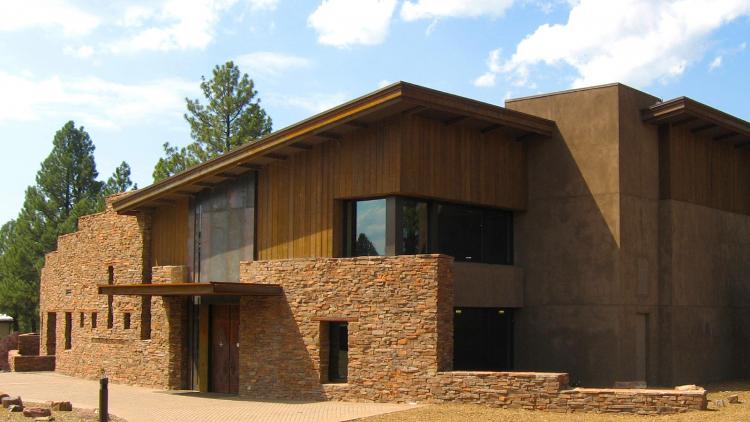
SUSTAINABILITY AWARD
For outstanding Eco-friendly programming - Attraction award: awarded at Discover Flagstaff annual stakeholder & partner meeting 2021.
Since 1928 the Museum of Northern Arizona has applied its mission of preserving the natural and cultural heritage of the region to its own campus.

The most striking example is the Easton Collection Center on the museums research campus. Its design elements honor and blend natural and man-made materials and environments, and embrace the worldviews of the region’s Native people. This 17,000 square foot building exceeds the U.S. Green Building Council's Platinum Leadership in Energy and Environmental Design (LEED®) Certification requirements and was recognized by Engineering News Record as the Greenest Building in the country in 2009, the year it was built. The building’s orientation, thermal mass, highly insulated roof, UV filtered skylights, insulated windows, photovoltaic solar panels, and energy saving fixtures reduce the production of greenhouse gases. The building uses materials recycled from old buildings that were replaced. Where possible, the design team selected regionally manufactured materials to reduce transportation costs, including native Coconino sandstone and Douglas fir salvaged from trestles out of the Great Salt Lake in Utah. In parts of the building, the cellulose wall insulation is made from recycled newspapers, and paints and other materials are low in volatile organic compounds to improve indoor air quality.
A living roof, planted with native vegetation, covers the entire main building area except the mechanical room and elevator shaft. Use of this approach significantly reduces temperature extremes at the roof surface, thereby reducing energy consumption and also extending the life of the roofing membrane. Precipitation absorption by the living roof also effectively eliminates stormwater runoff. Any excess water draining from the living roof is collected in a 22,000-gallon rain/snow water harvesting cistern system and recirculated back to the roof's irrigation system.
Built in consultation with a Native American Advisory Committee, the building has an East facing entrance to greet the sun every morning; a circular shape to invoke the cycles of life; and connections to the natural world with its 14,000 square foot living roof, appropriate use of day-lighting, local materials whenever possible, and views of the sacred San Francisco Peaks from both inside the building and out.
The environmental efforts extend throughout the museum campus:
Use of locally obtained materials
The exhibits building was constructed with locally sourced lava rock, called malpais. The Easton Collection Center was also constructed of locally manufactured masonry, stone, and concrete, produced from locally-extracted materials. Exterior wood siding is reclaimed lumber from a decommissioned railroad trestle in the Great Salt Lake.
Lighting: MNA has been transitioning to all LED lights and many of the exterior lights are solar powered.
Landscaping: The museum practices reconciliation ecology on its grounds, which is an effort to encourage biodiversity in human-dominated ecosystems. The landscape features native plants, uses minimal irrigation, and avoids pesticides by instead using Integrated Pest Management. Several gardens on the grounds offer opportunities for people to learn about native plants and environmentally friendly agricultural practices.
Rainwater harvesting: Catchment systems collect water from the Easton Collection Center and several other buildings on the MNA campus.
Groundwater recharge: Permeable pavers on the research campus walkways allow rainwater to absorb and reduce runoff.
Building reuse: Many of the structures on the research campus were originally farm buildings, including a dairy barn, milking shed, chicken coops and potato barn. Instead of tearing these structures down, the museum has continually repurposed them. The foundation for the Easton Collection Center was created using materials recycled from buildings that were demolished during ECC construction.
Alternative energy: The museum has an electric vehicle charging station and the Easton Collection Center roof incorporates a photovoltaic array which provides 60 percent of the ECC’s electricity needs. The longterm goal is to create a more extensive photovoltaic system on the campus supplying most or all the museums energy.
Energy efficiency: Programmable thermostats and ongoing improvements to insulation allow for more efficient use of energy throughout the campus.

For outstanding Eco-friendly programming - Attraction award: awarded at Discover Flagstaff annual stakeholder & partner meeting 2021.